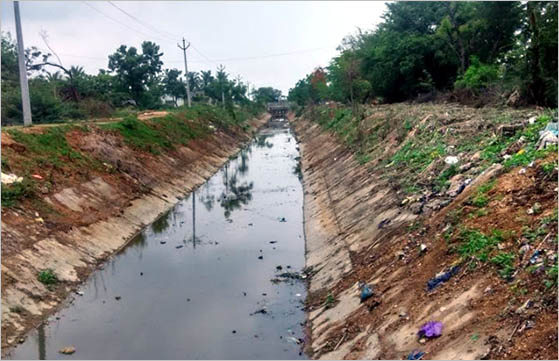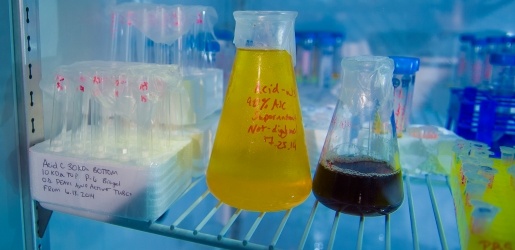Safe and Lasting Liquid Waste Disposal: Your Go-To Provider
Safe and Lasting Liquid Waste Disposal: Your Go-To Provider
Blog Article
How Fluid Waste Disposal Functions: A Thorough Overview of Strategies and Technologies Employed

Review of Fluid Waste Types
The complexity of fluid waste types demands a thorough understanding of their qualities and effects for disposal. Fluid waste can extensively be categorized right into numerous types, including commercial, local, agricultural, and contaminated materials. Each classification exhibits distinct properties, calling for particular monitoring strategies to mitigate environmental and wellness dangers.
Industrial liquid waste originates from making processes and typically consists of a series of contaminants, such as hefty metals, solvents, and organic compounds. Local liquid waste, mainly comprising wastewater from families and business facilities, contains raw material, nutrients, and pathogens (industrial wastewater treatment). Agricultural liquid waste, consisting of runoff from ranches, might include fertilizers, chemicals, and pet waste, posturing dangers to water quality and ecological communities
Hazardous fluid waste is characterized by its toxicity, reactivity, or possible to trigger injury. This category includes materials like acids, bases, and specific chemicals that require strict handling and disposal procedures. Recognizing these varied liquid waste types is crucial for creating reliable disposal approaches and ensuring compliance with ecological policies. Correct classification and characterization are important for applying ideal therapy strategies and minimizing the damaging influence on public health and wellness and the environment.
Physical Therapy Methods

Testing is the first step, where bigger particles and debris are removed from the liquid waste making use of screens or grates. This procedure shields downstream devices from damage and ensures smoother procedure. Adhering to testing, sedimentation utilizes gravitational force to different solids from fluids. In sedimentation storage tanks, much heavier particles work out near the bottom, forming a sludge layer, while the clarified fluid can be additional treated.
Filtration is an additional crucial approach that includes passing the fluid with porous products, such as sand or membranes, to capture smaller sized bits. This action improves the quality of the liquid, making it appropriate for succeeding treatment procedures.

Chemical Therapy Methods
Chemical therapy techniques are essential for properly handling fluid waste, especially in resolving dissolved and colloidal pollutants that physical methods may not adequately eliminate. These strategies use numerous chemical agents to counteract, precipitate, or transform unsafe substances into less dangerous forms.
One typical approach is coagulation and flocculation, where chemicals such as alum or ferric liquid waste removal melbourne chloride are included in promote the gathering of suspended bits. This procedure enhances sedimentation, permitting less complicated removal of the resulting sludge. In addition, oxidation procedures, utilizing agents like chlorine or ozone, are used to damage down complicated organic compounds and pathogens, providing the waste more secure for discharge or additional therapy.
Neutralization is one more essential technique, which adjusts the pH of acidic or alkaline waste streams to neutral levels, protecting against potential harm to downstream systems and the atmosphere. Moreover, progressed oxidation procedures (AOPs) utilize combinations of oxidants and ultraviolet light to break down consistent toxins, attaining a greater level of treatment efficiency.
Biological Treatment Processes
Biological treatment processes play a vital duty in the monitoring of fluid waste by making use of microbes to decompose raw material and lower impurity degrees. These processes can be broadly categorized into anaerobic and aerobic therapies, each using details microbial communities to attain reliable waste deterioration.
Cardiovascular treatment involves making use of oxygen to facilitate the failure of organic materials by bacteria. This procedure is generally carried out in triggered sludge systems, where aeration tanks give a helpful setting for microbial development, resulting in the oxidation of organic toxins. The resultant biomass can be divided from treated effluent via sedimentation.
On the other hand, anaerobic therapy happens in the lack of oxygen, relying upon different bacteria to damage down organic matter. This approach is especially advantageous for high-strength waste, as it creates biogas, a sustainable power resource, while decreasing sludge manufacturing. Technologies such as anaerobic digesters are often employed in industrial and local applications.
Both aerobic and anaerobic biological therapies not only decrease the environmental influence of liquid waste yet likewise promote resource recuperation, making them necessary components of lasting waste management methods. Their efficiency, efficiency, and flexibility sustain their prevalent implementation across different fields.
Emerging Technologies in Disposal
Ingenious techniques to liquid waste disposal are rapidly developing, driven by developments in technology and an enhancing emphasis on sustainability. Among these arising technologies, membrane layer bioreactors (MBRs) have obtained grip for their ability to integrate biological treatment with membrane purification, leading to top quality effluent that can be recycled in numerous applications. MBRs enable smaller sized footprints and a lot more effective procedures contrasted to typical systems.
One official site more appealing growth is using anaerobic food digestion incorporated with nutrient recuperation modern technologies, which not only treats liquid waste but also generates biogas and recovers valuable nutrients like nitrogen and phosphorus. This dual benefit read the article enhances source performance and lowers ecological influence.
In addition, progressed oxidation procedures (AOPs) are being embraced for the deterioration of complex organic pollutants. These methods utilize effective oxidants and stimulants to break down pollutants at the molecular level, supplying a very reliable option for difficult waste streams.
Furthermore, the integration of fabricated knowledge and maker knowing in waste management systems is maximizing functional efficiency and anticipating maintenance, resulting in reduced prices and enhanced environmental conformity. These innovations show a considerable change in the direction of more effective and lasting fluid waste disposal methods.
Verdict
In conclusion, efficient fluid waste disposal demands an extensive understanding of different strategies and technologies. By constantly progressing these methodologies, it becomes possible to attend to the expanding obstacles connected with fluid waste, inevitably adding to ecological defense and resource recovery.
Fluid waste disposal is a crucial element of environmental administration, calling for a detailed understanding of various strategies and innovations tailored to different waste kinds. Liquid waste can generally be categorized right into numerous types, including commercial, local, agricultural, and hazardous waste. Agricultural fluid waste, consisting of overflow from farms, may consist of fertilizers, pesticides, and animal waste, positioning dangers to water high quality and ecosystems.
Various physical therapy techniques play an essential duty in taking care of fluid waste successfully - industrial wastewater treatment.In conclusion, effective fluid waste disposal demands a thorough understanding of different methods and modern technologies
Report this page